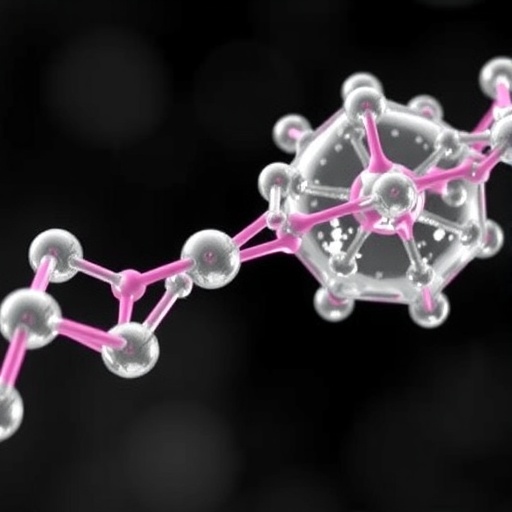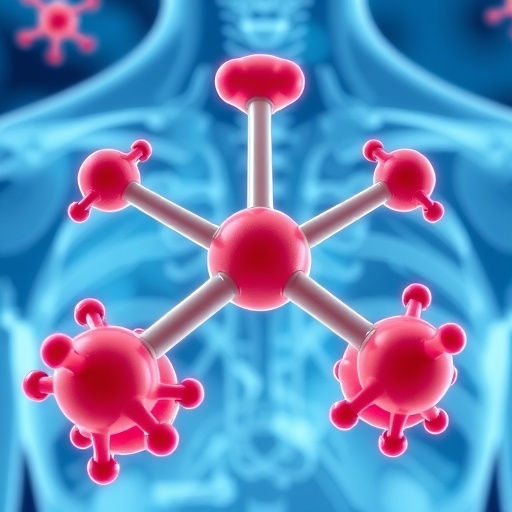PROTECT YOUR DNA WITH QUANTUM TECHNOLOGY
Orgo-Life the new way to the future Advertising by Adpathway
Polyethylene glycol (PEG) has emerged as a vital component in the formulation of nanomedicines, known for imparting stealth properties that significantly improve the pharmacokinetics of these advanced therapeutics. This polymer acts as a shield, effectively minimizing the recognition and clearance of nanoparticles by the immune system. The ability of PEG to mask the identity of nanocarriers leads to prolonged blood circulation times and enhanced stability of lipid-based formulations, which are critical for delivering drugs efficiently. However, while PEG’s benefits are unquestionable, the growing body of evidence regarding its immunogenic potential raises pertinent questions about its safety and efficacy in clinical applications.
A wide array of studies has indicated the presence of anti-PEG antibodies, which can be both pre-existing and induced by prior exposure to PEGylated medicines or vaccines. This immunogenicity poses significant challenges for the use of PEG in nanomedicine, as these antibodies can profoundly alter the biodistribution of nanocarriers, complicating treatment regimens and potentially leading to adverse reactions. Thus, scientists increasingly recognize the importance of rigorously assessing the impact of PEG immunogenicity on nanomedicines, encouraging the exploration of alternative strategies that mitigate these responses.
The sources of anti-PEG antibodies are diverse, including prior vaccinations and therapeutic interventions that utilize PEGylated components. Detection of these antibodies has made it easier for researchers to identify the potential risks involved in nanomedicine administration. A significant concern for clinicians is the unwanted inflammatory responses elicited by these antibodies. Such responses can lead to destabilization of lipid formulations, reducing their effectiveness and increasing the risk of hypersensitivity reactions in patients. Understanding these immunogenic pathways is crucial for advancing the safe and effective use of nanomedicines in clinical contexts.
To counteract the challenges posed by PEG immunogenicity, a variety of innovative strategies are being employed. Adjustments in the administration of nanomedicines—such as altering dosing schedules, administration routes, and timing—are among the first lines of defense. Moreover, using competition strategies that involve high-molecular-mass PEG can create a competitive environment that dampens the activity of anti-PEG antibodies, potentially reducing their negative effects on nanomedicine biodistribution.
Engineering strategies focused on improving the stealth properties of PEG have also been the subject of intense investigation. By altering the structure and molecular weight of PEG, researchers aim to enhance the effectiveness of these nanoparticles, combing advanced polymer chemistry with nanotechnology insights to create superior formulations. Alongside this, the development of complement inhibitors to reduce opsonization presents an intriguing avenue of exploration, providing a complementary approach to extend the circulation time of nanomedicines.
Alternatives to PEG-centered designs have garnered considerable attention in recent years, especially as scientists look to develop PEG-free stealth nanomedicines. The introduction of alternative polymers that exhibit similar stealth characteristics holds promise for overcoming the limitations associated with PEG. Polymer-based nanoparticles, particularly those that leverage natural biomolecules, can offer an elegant solution to reduce immune recognition without relying on PEG.
The use of protein nanocages stands as another innovative strategy in the context of stealth nanomedicine. These nanostructures, built from natural proteins, are capable of encapsulating therapeutic agents while evading immune detection. Likewise, biomimetic particles that incorporate cell membranes, serum components, or bioactive molecules may provide an effective camouflage to elude the immune system, ensuring that drug delivery remains efficient and effective.
As research progresses, the application of anti-PEG antibodies in the creation of artificial cell receptors also presents fascinating opportunities in the field of nanomedicine. Harnessing these antibodies for therapeutic benefits could lead to groundbreaking advancements, paving the way for new technologies in targeted delivery systems. This not only offers potential solutions to existing challenges but also opens up entirely new avenues for therapeutic innovation through the strategic manipulation of immune responses.
In summary, while PEG has revolutionized nanomedicine by enhancing the effectiveness of drug delivery systems, the underlying immunogenicity concerns cannot be ignored. The scientific community must continuously engage in dialogue surrounding these risks, embracing a multi-faceted approach to mitigate the potential drawbacks associated with PEGylated therapeutics. Research efforts will undoubtedly evolve, leading us closer to safer, more efficient, and effective nanomedicine options that cater to the lengthy and complex road of modern medicine.
Ongoing investigations will continue to validate alternative stealth strategies, refine PEG engineering, and explore the intricate dynamics of immune responses associated with PEGylated formulations. As scientists identify innovative solutions, the dual promise and challenges of PEG in nanomedicine will shape the future of therapeutic development, ultimately leading to more sophisticated and effective treatments for various diseases.
The conversation surrounding PEG and its implications in nanomedicine is far from over. As new data continues to emerge, multidisciplinary collaboration across immunology, materials science, and pharmacology will be essential for unlocking the full potential of nanomedicines and their capacity to transform health care.
In addressing these complex issues, researchers remain committed to advancing our understanding of both PEG immunogenicity and the development of safe, efficient alternatives that can maintain the exciting promise of nanomedicine, paving the way for new therapeutic landscapes that place patient safety and efficacy at the forefront.
Additional research will not only clarify the mechanisms through which anti-PEG antibodies exert their effects but will also explore the societal implications of immunogenic therapies. As we move toward a more personalized medicine environment, the need for precise characterization and understanding of these interactions will be essential for bringing the next wave of innovative treatments to the clinic.
Through this ongoing journey, the scientific community will strive to marry the efficiencies afforded by nanotechnology with the rigorous demands of immunological safety, ensuring that all advances in the field serve the ultimate goal of enhancing patient outcomes and improving the overall quality of life for individuals facing complex health challenges.
Understanding and addressing the immunogenic properties of PEG represents a pivotal challenge in nanomedicine today, yet it also offers a unique window into the evolution of treatment strategies, leading to a future where tailored and effective solutions are within reach for everyone.
Subject of Research: PEG Immunogenicity in Nanomedicine
Article Title: Polyethylene glycol immunogenicity in nanomedicine
Article References:
Chen, Y., Su, YC. & Roffler, S.R. Polyethylene glycol immunogenicity in nanomedicine.
Nat Rev Bioeng (2025). https://doi.org/10.1038/s44222-025-00321-6
Image Credits: AI Generated
DOI: 10.1038/s44222-025-00321-6
Keywords: PEG, nanomedicine, immunogenicity, antibody response, drug delivery systems, stealth properties, polymer alternatives, therapeutic innovation.
Tags: alternative strategies in nanomedicineanti-PEG antibody responsesbiodistribution of nanoparticlesclinical implications of PEG immunogenicityimmunological impact on drug deliverylipid-based formulation stabilityPEG immunogenicity challengesPEGylated medicine safety concernspharmacokinetics of nanocarriersPolyethylene glycol in nanomedicinestealth properties of PEGtherapeutic interventions with PEG


 2 hours ago
7
2 hours ago
7





















 English (US) ·
English (US) ·  French (CA) ·
French (CA) ·